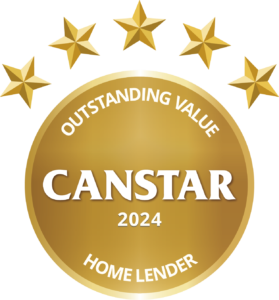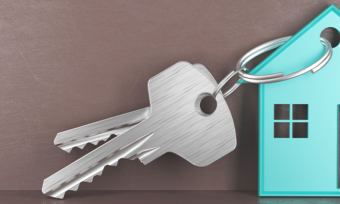Heartland Bank Home Loans
Heartland Bank is one of the winners of Canstar’s most recent Outstanding Value | Home Lender awards. The awards recognise the financial institutions that deliver the best mortgage products for Kiwi homeowners.
The award comes on the back of recognition from our expert research panel for three of the bank’s mortgage products that deliver Outstanding Value:
- Residential Fixed Home Loans
- Residential Floating Home Loans
- Line of Credit Home Loans
What types of home loans does Heartland Bank offer?
Heartland Bank offers the following home loans. Note that Heartland Bank only provides loans for owner-occupiers with a 20% deposit.
Also, the property you wish to purchase must be:
- A standalone, single section house or a terraced house/townhouse
on a freehold, cross lease or on a unit title (not leasehold) - Located in an urban centre
- Owned or purchased either joint or individually (not in a trust or company)
- Already built
Fixed Rate Home Loan
Comes with the certainty of knowing exactly how much your repayments will be, for a fixed period of time.
Floating Home Loan
Offers the flexibility to make extra repayments or pay the loan off in full whenever you like. Interest rates are subject to change.
Revolving Credit Home Loan
A transaction account and loan all in one. Your loan becomes an everyday account – with your money flowing in and out of it. Interest is charged based on what you’ve used of the limit each day. By accumulating all your cash in this account, you can keep your balance as low as possible – saving you interest.
Reverse Mortgage
A reverse mortgage allows homeowners aged over 60 to access some of the equity in their home. Once you receive the loan amount, you don’t make regular repayments. Instead interest is calculated on the outstanding balance and added monthly to your loan. The total loan amount, including interest, is only repayable when you move permanently from your home.
The amount you can access depends on your age and the value of your home. Voluntary repayments can be made at any time, which reduces the balance and interest charged.
How do I apply for a Heartland Bank home loan?
You can only apply online through the Heartland Bank website. The bank’s online application process uses a bank statement retrieval process, which allows it to digitally verify your income and expenses.
Once you have completed the application process and received an online approval, Heartland Bank will get in touch via email or telephone to verify your information, conduct any further checks required and confirm the loan structure to ensure it meets your needs.
Canstar’s free comparison tool gives you the ability to compare Heartland Bank home-loan products with those from other lenders in the mortgage market. For more details, just click on the button below.
Helpful Home Loans Information
Here are the four most common types of home loans:
Fixed-rate home loan
A fixed-rate home loan has an interest rate that is set for a fixed time period, commonly between one and three years years.
The main advantage of a fixed-rate loan is that it gives you certainty of your repayments over the fixed term.
The main disadvantage of a fixed rate loan is its inflexibility; generally, large additional payments cannot be made. You’ll probably also face a break fee if you decide to switch mortgages or lenders before the end of the fixed term.
Floating-rate home loan
A floating-rate loan has an interest rate that rises and falls over the period of your home loan. This can be in response to movements in the Official Cash Rate, or due to a business decision by your financial institution.
The main advantage of a floating-rate loan is its flexibility. While you must meet your minimum repayments, you can pay off extra lump sums whenever you want to. There are also no financial penalties if you decide to switch mortgages or lenders.
A disadvantage of a floating rate loan is that your minimum repayment amount can rise or fall at any time. Floating rates are also usually higher than fixed rates.
Interest-only home loan
Instead of paying off your principal loan, plus interest repayments, you only pay off the interest fees. This type of loan is most often used by investors who intend to sell the property for capital gains.
Interest-only home loans are not recommended for standard owner-occupiers, due to the increased long-term interest costs associated with not paying off the loan principal (the original loan amount).
Generally, interest-only home loans have a short time frame (up to five years) before they revert to a standard principal and interest loan.
Line of credit home loan
A line of credit home loan is a mortgage that allows you to borrow against the equity in your home. It gives you the ability and flexibility to access a portion of the equity at any time, up to an agreed limit, in a similar way to an overdraft.
You only pay interest on any sum borrowed, usually at a variable rate, which means you can make extra payments to reduce the sum owed at any time.
Other home loan features
There are many different features that can be attached to your home loan, which can include:
- An offset account
- A redraw facility
- The ability to make extra repayments
- The ability to split the loan between fixed and variable (floating)
- The ability to switch to a different type of loan
- Ability to pre-pay interest
- Online functionality
- Lending terms, including its LVR (loan to value ratio)
- Guarantor security availability
Heartland Bank
5-Star Rated Products
Residential Fixed | Residential Floating | Line of Credit
View the Outstanding Value Home Lender Awards




